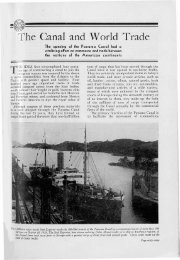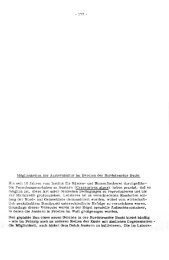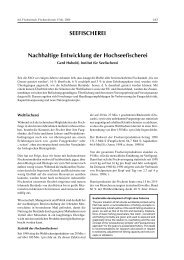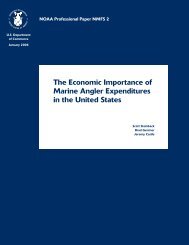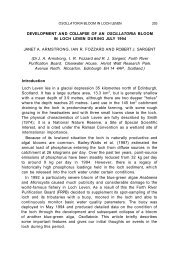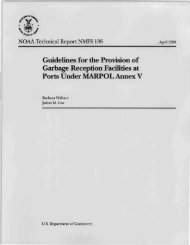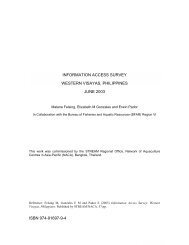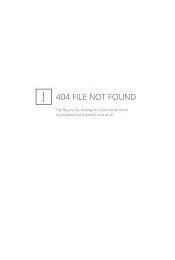Download (1417Kb) - Aquatic Commons
Download (1417Kb) - Aquatic Commons
Download (1417Kb) - Aquatic Commons
Create successful ePaper yourself
Turn your PDF publications into a flip-book with our unique Google optimized e-Paper software.
Introduction<br />
This annotated bibliography covers the literature to the end of<br />
November 1977 and includes references to samplers that could be used for<br />
the rapid removal of benthic invertebrates from the natural substrata of<br />
rivers and streams. The bibliography does not therefore include refer-<br />
ences to colonisation samplers using artificial or natural substrata, or<br />
to light traps, or to traps for catching drifting invertebrates, upstream<br />
-moving invertebrates and the emerging imagines of aquatic insects.<br />
Although sub-surface samplers that require colonisation of substrata in<br />
containers are excluded, tubes that are driven into the substratum to<br />
sample immediately the interstitial and hyporheal fauna are included in<br />
the section on small diameter corers (5.2). The bibliography also<br />
includes marine samplers that have been, or could be, used in freshwater.<br />
Although our coverage of Russian work is incomplete, we have included a<br />
selection of recent and important references. We will continue collect-<br />
ing references and will be pleased to receive copies or notifications of<br />
papers omitted and new publications.<br />
We have seen nearly all the publications in this bibliography and<br />
the brief annotations include information on sampling area, mode of<br />
operation, or any other characteristics that we consider important. The<br />
review section is deliberately biased towards freshwater samplers and<br />
includes a selection of the more relevant publications on sampling marine<br />
benthos. References to samplers are divided into the following six<br />
major categories: net and quadrat samplers; scoops, shovels and dredges;<br />
grabs; corers; suction and air-lift samplers; electroshocking samplers.<br />
This classification of samplers according to type is continued within<br />
each of these sections except the last. The references to samplers have<br />
also been classified according to the mode of operation of the sampler<br />
(S = sampler limited to shallow water of wadeable depth; D = diver-<br />
operated sampler; R = sampler operated by remote control from above water<br />
surface), the type of substratum on which the sampler can be used (M =<br />
mud and soft sediments; C = coarse gravel; L = large stones; P = macro-<br />
phytes), and the origin of the sampler (Mar = marine; FW = freshwater).<br />
This classification is based on the information supplied by the authors<br />
and we have assumed that the information is correct. Most of the foreign<br />
titles have been translated into English.<br />
The number of references in each category is shown in the summary<br />
3



